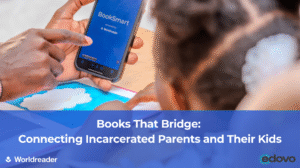“Data leads to better decisions and better policies. It helps us create goals and measure progress. It enables advocacy and accountability.” – Melinda Gates, 2019 Annual Letter
Why data matters in international education
Data is vital to quality education. Within the community of international educators, data helps us track progress at the individual, organizational and ecosystem level, as we work towards meeting UN Sustainable Development Goal 4 – Quality Education[efn_note]https://sustainabledevelopment.un.org/sdg4[/efn_note].
Even in the midst of the COVID-19 learning crisis, the international education community continues to emphasize the importance of education data to ensure the needs of children are being met. As UNESCO states in its recent fact sheet, “essential data collection should and can continue to inform vital policy decisions on education delivery as well as support the health and well-being of learners – especially those in vulnerable populations.”[efn_note]http://uis.unesco.org/en/files/fs58-need-essential-education-data-pdf-0[/efn_note] Yet in the midst of COVID-19, data collection comes with severe challenges considering the risks involved with sending enumerators out into communities for data collection. Through digital tools like Worldreader’s suite of applications, we are better equipped to track progress at a safe distance and meet this moment.
How data supports Worldreader’s work
At Worldreader, we understand the value of data as we work to support readers across the Global South and improve learning outcomes. With consent, we monitor reading behaviors from readers in 47 countries. Data collected through our reading apps provides answers to these key questions:
- How many people are reading?
- How many hours are they reading?
- How many books are they reading?
- Where are they reading?
- What are they reading?
- Which languages are they reading in (based on available books)?
Further, the automated nature and volume of Worldreader’s reading data has allowed Worldreader’s data science team to develop proprietary data science models to capture reading speed[efn_note]Reading speed is the ratio of text interacted with, in characters, to interaction time. It is objective, consistent and trackable and can be used as a proxy for reading fluency[/efn_note]. These models distinguish between reading, browsing, and idling behaviour via reading speeds on our apps. If a reader is not progressing through a page at more than a certain number of characters per minute (cpm), we assume they are “dreaming” or idling on the page. This threshold has been kept low for our pre-primary projects to account for young children interacting with pictures in storybooks. On the other hand, if a user moves through a page above a certain cpm speed, we assume they are browsing, flipping through pages without meaningfully engaging with the text. In this way, we are able to better track reading time-on-task. When paired with outcome-level data gathered through more traditional assessments, this data can inform education stakeholders about the reading behavior that led to assessment results.
In our programming, we use our backend data to measure reading engagement and behaviors in order to interpret the results of learning outcomes measures which may include: literacy, knowledge, attitude and practice, socio-emotional learning, school-readiness and life skills assessments. Here are some examples of learnings made possible from data collected through our mobile phone reading apps for children and youth:
- In Jordan, automated reading behavior data collected through our reading application for the Tuta Tuta project helped us understand whether or not our community partner’s approaches were helping establish new reading behaviors with their children in the home.
- In Ghana, with our Inspire Us collection, backend data gave critical insights into the demographics of users engaging with our Women’s Empowerment collection. With the support of qualitative research through book clubs and analysis of social media discussions around the books, we were able to determine which books helped challenge traditional gender stereotypes among West African youth.
In Kenya, where our Anasoma program worked to engage more women and girls to read on their phones, data from Worldreader’s back-end helped us identify clusters of readers in Kenya. We were then able to provide content that aligned with their interests and professional needs during future reading campaigns[efn_note]See Anasoma Final Report: https://comms.worldreader.org/wp-content/uploads/2019/07/Anasoma-Final-Report-1.pdf[/efn_note].
How Worldreader’s data supports the work of other organizations
Worldreader’s data also strengthens our partner’s practice and programming. INGOs (international non-governmental organizations), local CBOs (community-based organizations), libraries, and local governments can use Worldreader data to evaluate the use of digital books in real time. This data provides insight into which books are being searched for, which are read, how frequently and with what level of engagement. For example, if data shows parents are not reading in the home, it may signal that parents need more support in digital literacy or storytelling practices. If data shows that students are searching for a particular subject, it may signal the need to acquire more books in that area.
Our data also benefits local governments and national library systems in studying the impact of digital reading on reading behaviors, digital reading adoption, library patronage, and the reading behaviors of other education actors.
Finally, our publishing partners benefit by gaining insight into how readers engage with their content, so they can ensure their books meet market-demand.
How Worldreader approaches data privacy
At Worldreader, we take data privacy seriously. We believe our data privacy policies are critical to earning and maintaining the trust of the individuals and communities we serve, as well as the donors and funders that support our work. These policies ensure that we factor privacy into all of our projects. We clearly set out what information we collect, why we collect it, the rights our readers have, and how they can exercise them. To learn more, read our Responsible Program Data Policy and Privacy Notice for Worldreader Applications.
To learn more about data privacy generally, we recommend the free, quality resources and guides available from national data protection agencies such as the Agencia Española de Proteccion de Datos in Spain, the Information Commissioner’s Office in the UK, and the European Data Protection Board.
The future of Worldreader data
Over the past ten years, Worldreader has reached more than 13 million readers across 47 countries through its reading applications. Currently, approximately one million app interaction records are recorded each day, including data on time spent reading, types of books read, and searching and browsing practices. Using this big data, Worldreader is working on adding features such as audio and transformation of voice to text, to provide a rapid and reliable way to measure oral reading fluency as number-of-words-correct-per-minute (wcpm).
Worldreader’s backend data gathered through BookSmart, our reading app for children, will help educators understand how a child’s reading behaviors predict their reading outcomes. Worldreader will offer its unique reading-data tools to meet an operating partner’s needs, including enhancing existing commonly used reading assessments (e.g., IDELA, EGRA, ASER, UWEZO) in the international educational community.
Through innovative data collection and analysis, Worldreader will continue supporting the international education community and readers across the Global South.




